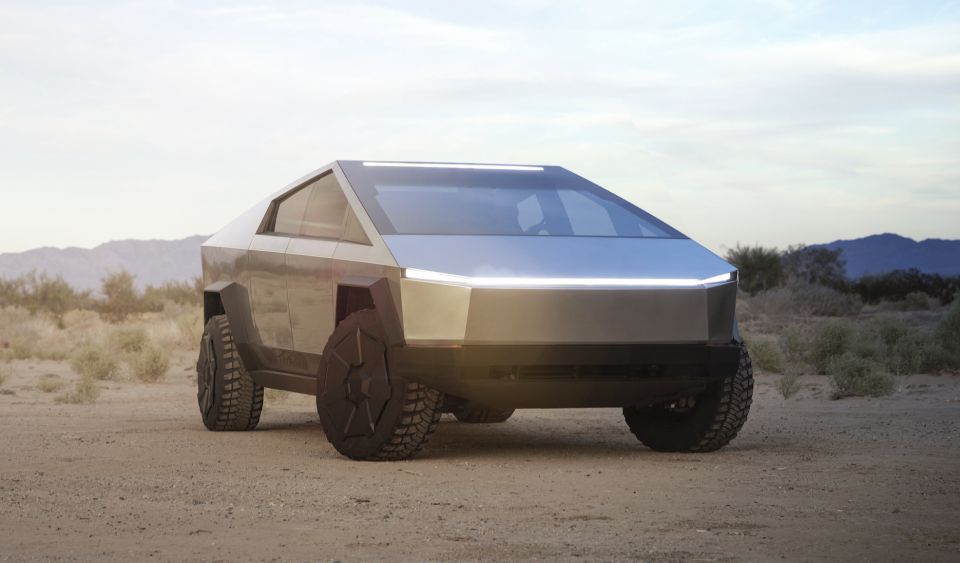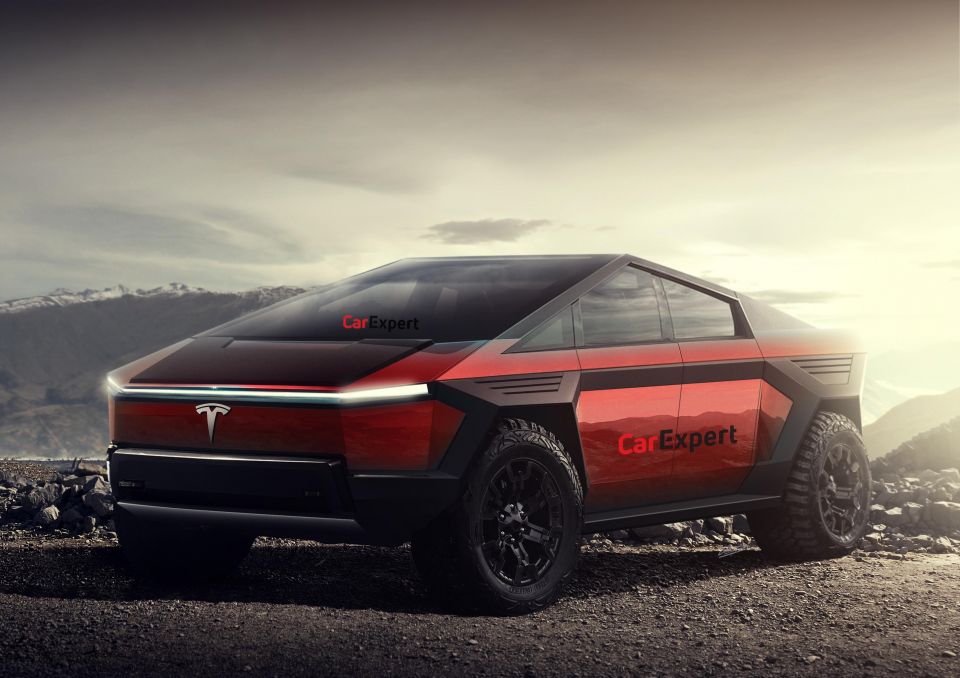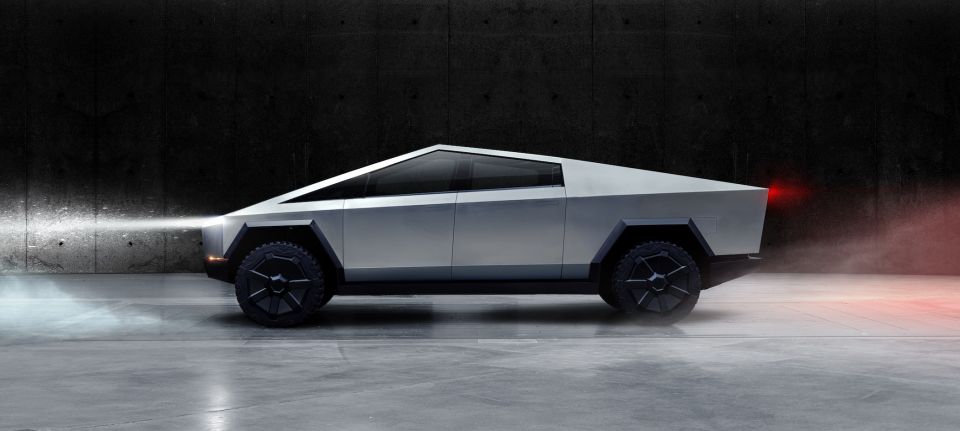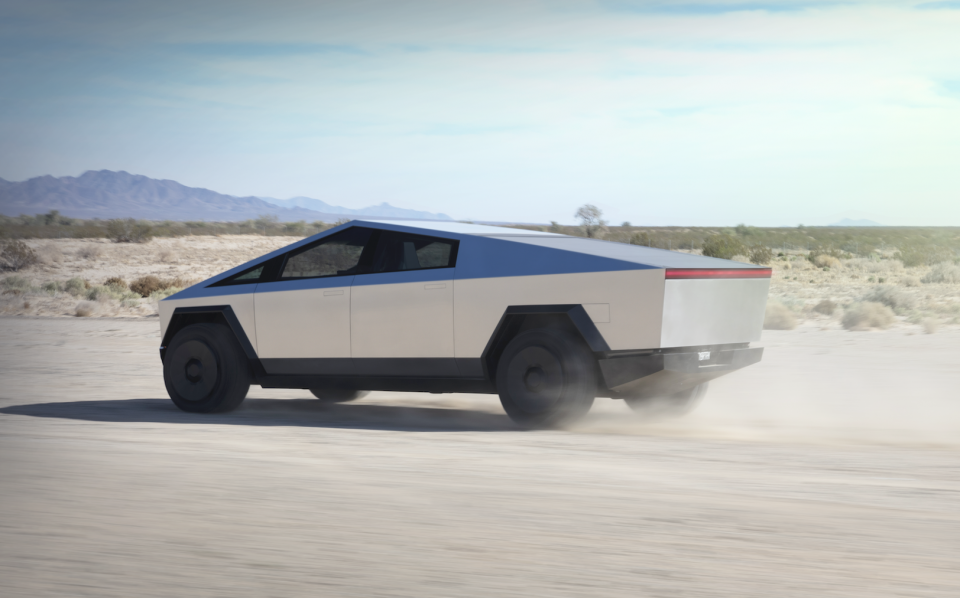

Andrew Maclean
Honda CR-V RS e:HEV vs Toyota RAV4 Edge Hybrid: Spec battle
5 Days Ago

News Editor
It’s looking less and less likely we’ll see the Tesla Cybertruck rolling off the production line this year.
Tesla announced the Cybertruck would enter production late in 2021, but the company has said in its second quarter 2021 update it’ll begin building the controversial ute after the Model Y enters production in Berlin and Austin.
“We believe we remain on track to build our first Model Y vehicles in Berlin and Austin in 2021,” the company says in its update, with CEO Elon Musk adding this would be ‘limited production’ at first.
“We are also making progress on the industrialization of Cybertruck, which is currently planned for Austin production subsequent to Model Y.”

While it stopped short of officially delaying the start of production to 2022 as it did with the Semi truck, it leaves a vanishingly small window for the Cybertruck to roll off the line in 2021.
The Semi program has been delayed due to global supply chain challenges and the limited availability of battery cells.
“The Cybertruck is currently in its alpha stages. We finished basic engineering of the architecture of the vehicle. With the Cybertruck, we’re redefining how a vehicle is being made,” said Lars Moravy, Tesla’s vice president of vehicle engineering during the Q2 2021 earnings call.
“As Elon said, it carries much of the structural pack and large casting designs of the Model Y being built in Berlin and Austin. Obviously, those take priority over the Cybertruck, but we are moving into the beta phases of Cybertruck later this year, and we will be looking to ramp that in production and take it to Texas after Model Y is up and going.”

Musk confirmed late in 2020 the Cybertruck would receive various “improvements” ahead of its launch.
It’s expected to have a more level character line running along its side, and a window sill that sits more flush with the window glass.
With its huge body and distinctive angles, Mr Musk has previously said the Cybertruck could be followed by a more conventional pickup truck if sales are slow.
It’s targeted specifically at the USA, where the Ford F-150 is the best-selling car in the country.
“We sort of made the decision to not make this a world truck. So it doesn’t comply with a lot of specifications, like it doesn’t comply with EU’s specs and stuff… Maybe we can get, I don’t know, some exceptions to EU rules depending on how it’s classified,” he told Automotive News.
It’s unclear if Musk’s statements affect the Cybertruck’s introduction here. Officially, Australian consumers can already pre-order a Cybertruck, while the Tesla website says the Cybertruck will be available globally.

Tesla has previously said the single-motor, rear-wheel drive Cybertruck will start in the USA at US$40,000.
A lot has happened in the electric ute market since the Cybertruck’s memorable reveal, however.
It has potentially lost two potential competitors with the high-profile strife plaguing start-ups Nikola and Lordstown Motors, though Ford has also revealed its F-150 Lightning in the interim.
The Blue Oval brand, whose F-150 has been the United States’ best-selling vehicle for 39 consecutive years, will introduce the all-electric Lightning in the Northern Hemisphere’s Spring next year.
In the US, it’ll be priced from a lower than expected $US39,974 ($AUD51,520), with top-spec models exceeding $US90,000.
The Cybertruck will also go up against the Rivian R1T and GMC Hummer EV.

While all of those models feature relatively conventional pickup truck silhouettes, the Cybertruck looks more like a 1970s concept car from Marcelo Gandini.
It also features a series of headline-grabbing features, including wrapped bulletproof stainless steel skin, tempered glass, an air compressor and an on-board generator.
It has a claimed maximum range of 800km, the option of dual- and tri-motor all-wheel drive set-ups, a mooted 6.5 tonne tow rating, and a maximum 0-60mph time of 2.9 seconds.
That’s in addition to the usual suite of Tesla technology like Full Self-Driving and regular over-the-air updates.
Where expert car reviews meet expert car buying – CarExpert gives you trusted advice, personalised service and real savings on your next new car.
William Stopford is an automotive journalist based in Brisbane, Australia. William is a Business/Journalism graduate from the Queensland University of Technology who loves to travel, briefly lived in the US, and has a particular interest in the American car industry.


Andrew Maclean
5 Days Ago


Shane O'Donoghue
5 Days Ago


Anthony Crawford
4 Days Ago


Matt Campbell
3 Days Ago


James Wong
2 Days Ago


Max Davies
14 Hours Ago